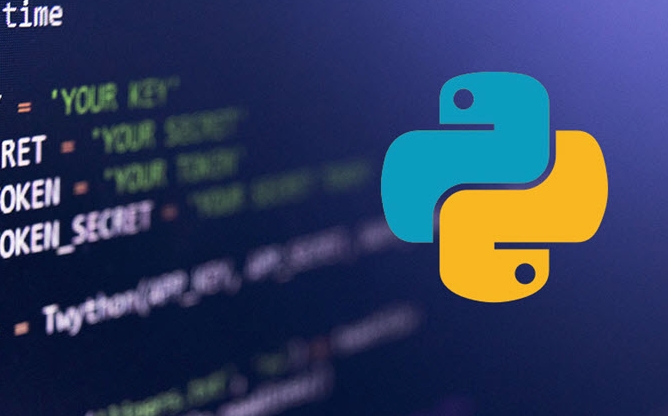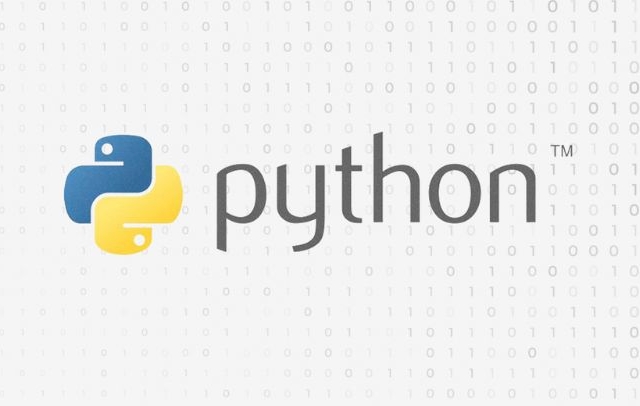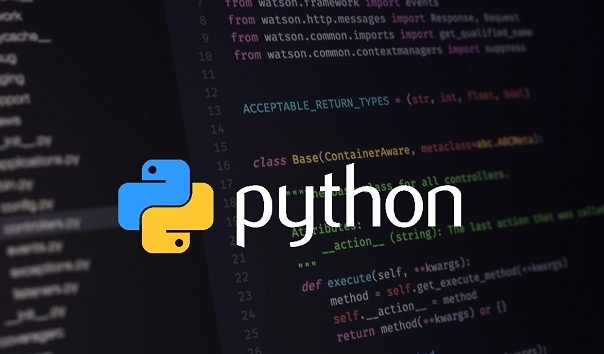ABC is a module in Python used to define abstract base classes. It forces subclasses to implement specific behaviors through abstract methods. When using it, you need to import ABC and abstractmethod from the abc module, inherit ABC and use @abstractmethod to mark the methods that must be rewritten; abstract classes can contain ordinary methods and abstract methods, and subclasses must implement all abstract methods before they can be instantiated; it is suitable for scenarios that unify interfaces, share partial logic, and improve the clarity of code structures, such as plug-in systems, framework design, and multi-data source processing.

Python's ABC (Abstract Base Classes) can well implement abstract class concepts in object-oriented. It not only defines interfaces, but also forces subclasses to implement specific methods, which is very useful for building code with clear structure and strong maintenance.

What is ABC?
ABC is a module in Python that defines abstract base classes. Abstract base classes cannot be instantiated, they can only be inherited. Its core feature is that one or more abstract methods can be declared in a class, and these methods must be implemented in a subclass.

For example, if you have a Shape class and want all subclasses to implement area() method, you can use ABC to force this constraint:
from abc import ABC, abstractmethod
class Shape(ABC):
@abstractmethod
def area(self):
pass If you try to instantiate Shape directly or the subclass does not implement area() , the program will report an error.

How to define abstract classes using ABC?
To use ABC, you first need to import ABC and abstractmethod from the abc module. Then create abstract base classes by inheriting ABC and use the @abstractmethod decorator to mark those methods that must be rewritten.
Common practices are as follows:
- There can be ordinary methods in abstract classes or abstract methods.
- Subclasses must implement all abstract methods to be instantiated
- It can be used with
@property,@classmethodand other decorators
For example:
class Animal(ABC):
@abstractmethod
def speak(self):
pass
def greet(self):
print(f"{self.speak()}!") Here speak() is an abstract method, but greet() is a concrete method, and subclasses can call it directly.
When is ABC suitable?
ABC is particularly suitable for the following situations:
- You need to define a set of interfaces to ensure that subclasses implement certain behaviors
- Different subclasses share some logic, but they have their own unique implementation methods.
- You want to improve the readability and structural clarity of your code, avoiding arbitrary inheritance and misuse
Some practical applications include:
- Unified interface when building a plug-in system
- When designing a framework, specify the method that components must implement
- Multiple data source processing, such as different database adapters must implement
connect()andquery()
It should be noted that Python is a dynamically typed language and does not strictly require interfaces like Java. So ABC is more like a "soft constraint" used to remind and organize code structures during development.
Pay attention to small details
- If a class inherits ABC but does not implement all abstract methods, it will become an abstract class itself
- The abstract method can be
@classmethodor@property, but it needs to be placed in the innermost layer with@abstractmethod - When using
abc.abstractmethod, do not write as old writing methods likeabc.abstractclassmethod(although it is still supported, it is recommended to use@abstractmethodto wrap it)
Basically that's it. The rational use of ABC can make the class design clearer and easier to maintain. But it is not necessary to use, and sometimes simple agreements can solve the problem.
The above is the detailed content of Python Abstract Base Classes ABC. For more information, please follow other related articles on the PHP Chinese website!

Hot AI Tools

Undress AI Tool
Undress images for free

Undresser.AI Undress
AI-powered app for creating realistic nude photos

AI Clothes Remover
Online AI tool for removing clothes from photos.

Clothoff.io
AI clothes remover

Video Face Swap
Swap faces in any video effortlessly with our completely free AI face swap tool!

Hot Article

Hot Tools

Notepad++7.3.1
Easy-to-use and free code editor

SublimeText3 Chinese version
Chinese version, very easy to use

Zend Studio 13.0.1
Powerful PHP integrated development environment

Dreamweaver CS6
Visual web development tools

SublimeText3 Mac version
God-level code editing software (SublimeText3)
 Polymorphism in python classes
Jul 05, 2025 am 02:58 AM
Polymorphism in python classes
Jul 05, 2025 am 02:58 AM
Polymorphism is a core concept in Python object-oriented programming, referring to "one interface, multiple implementations", allowing for unified processing of different types of objects. 1. Polymorphism is implemented through method rewriting. Subclasses can redefine parent class methods. For example, the spoke() method of Animal class has different implementations in Dog and Cat subclasses. 2. The practical uses of polymorphism include simplifying the code structure and enhancing scalability, such as calling the draw() method uniformly in the graphical drawing program, or handling the common behavior of different characters in game development. 3. Python implementation polymorphism needs to satisfy: the parent class defines a method, and the child class overrides the method, but does not require inheritance of the same parent class. As long as the object implements the same method, this is called the "duck type". 4. Things to note include the maintenance
 Python Function Arguments and Parameters
Jul 04, 2025 am 03:26 AM
Python Function Arguments and Parameters
Jul 04, 2025 am 03:26 AM
Parameters are placeholders when defining a function, while arguments are specific values ??passed in when calling. 1. Position parameters need to be passed in order, and incorrect order will lead to errors in the result; 2. Keyword parameters are specified by parameter names, which can change the order and improve readability; 3. Default parameter values ??are assigned when defined to avoid duplicate code, but variable objects should be avoided as default values; 4. args and *kwargs can handle uncertain number of parameters and are suitable for general interfaces or decorators, but should be used with caution to maintain readability.
 Explain Python generators and iterators.
Jul 05, 2025 am 02:55 AM
Explain Python generators and iterators.
Jul 05, 2025 am 02:55 AM
Iterators are objects that implement __iter__() and __next__() methods. The generator is a simplified version of iterators, which automatically implement these methods through the yield keyword. 1. The iterator returns an element every time he calls next() and throws a StopIteration exception when there are no more elements. 2. The generator uses function definition to generate data on demand, saving memory and supporting infinite sequences. 3. Use iterators when processing existing sets, use a generator when dynamically generating big data or lazy evaluation, such as loading line by line when reading large files. Note: Iterable objects such as lists are not iterators. They need to be recreated after the iterator reaches its end, and the generator can only traverse it once.
 Python `@classmethod` decorator explained
Jul 04, 2025 am 03:26 AM
Python `@classmethod` decorator explained
Jul 04, 2025 am 03:26 AM
A class method is a method defined in Python through the @classmethod decorator. Its first parameter is the class itself (cls), which is used to access or modify the class state. It can be called through a class or instance, which affects the entire class rather than a specific instance; for example, in the Person class, the show_count() method counts the number of objects created; when defining a class method, you need to use the @classmethod decorator and name the first parameter cls, such as the change_var(new_value) method to modify class variables; the class method is different from the instance method (self parameter) and static method (no automatic parameters), and is suitable for factory methods, alternative constructors, and management of class variables. Common uses include:
 How to handle API authentication in Python
Jul 13, 2025 am 02:22 AM
How to handle API authentication in Python
Jul 13, 2025 am 02:22 AM
The key to dealing with API authentication is to understand and use the authentication method correctly. 1. APIKey is the simplest authentication method, usually placed in the request header or URL parameters; 2. BasicAuth uses username and password for Base64 encoding transmission, which is suitable for internal systems; 3. OAuth2 needs to obtain the token first through client_id and client_secret, and then bring the BearerToken in the request header; 4. In order to deal with the token expiration, the token management class can be encapsulated and automatically refreshed the token; in short, selecting the appropriate method according to the document and safely storing the key information is the key.
 What are Python magic methods or dunder methods?
Jul 04, 2025 am 03:20 AM
What are Python magic methods or dunder methods?
Jul 04, 2025 am 03:20 AM
Python's magicmethods (or dunder methods) are special methods used to define the behavior of objects, which start and end with a double underscore. 1. They enable objects to respond to built-in operations, such as addition, comparison, string representation, etc.; 2. Common use cases include object initialization and representation (__init__, __repr__, __str__), arithmetic operations (__add__, __sub__, __mul__) and comparison operations (__eq__, ___lt__); 3. When using it, make sure that their behavior meets expectations. For example, __repr__ should return expressions of refactorable objects, and arithmetic methods should return new instances; 4. Overuse or confusing things should be avoided.
 How does Python memory management work?
Jul 04, 2025 am 03:26 AM
How does Python memory management work?
Jul 04, 2025 am 03:26 AM
Pythonmanagesmemoryautomaticallyusingreferencecountingandagarbagecollector.Referencecountingtrackshowmanyvariablesrefertoanobject,andwhenthecountreacheszero,thememoryisfreed.However,itcannothandlecircularreferences,wheretwoobjectsrefertoeachotherbuta
 Python `@property` decorator
Jul 04, 2025 am 03:28 AM
Python `@property` decorator
Jul 04, 2025 am 03:28 AM
@property is a decorator in Python used to masquerade methods as properties, allowing logical judgments or dynamic calculation of values ??when accessing properties. 1. It defines the getter method through the @property decorator, so that the outside calls the method like accessing attributes; 2. It can control the assignment behavior with .setter, such as the validity of the check value, if the .setter is not defined, it is read-only attribute; 3. It is suitable for scenes such as property assignment verification, dynamic generation of attribute values, and hiding internal implementation details; 4. When using it, please note that the attribute name is different from the private variable name to avoid dead loops, and is suitable for lightweight operations; 5. In the example, the Circle class restricts radius non-negative, and the Person class dynamically generates full_name attribute






